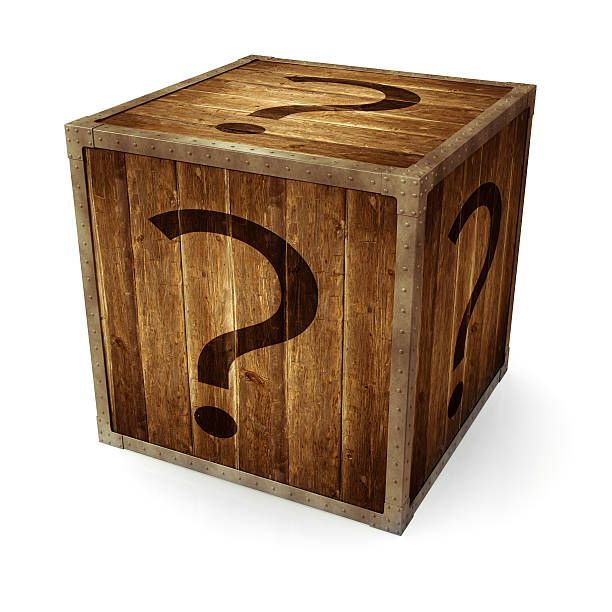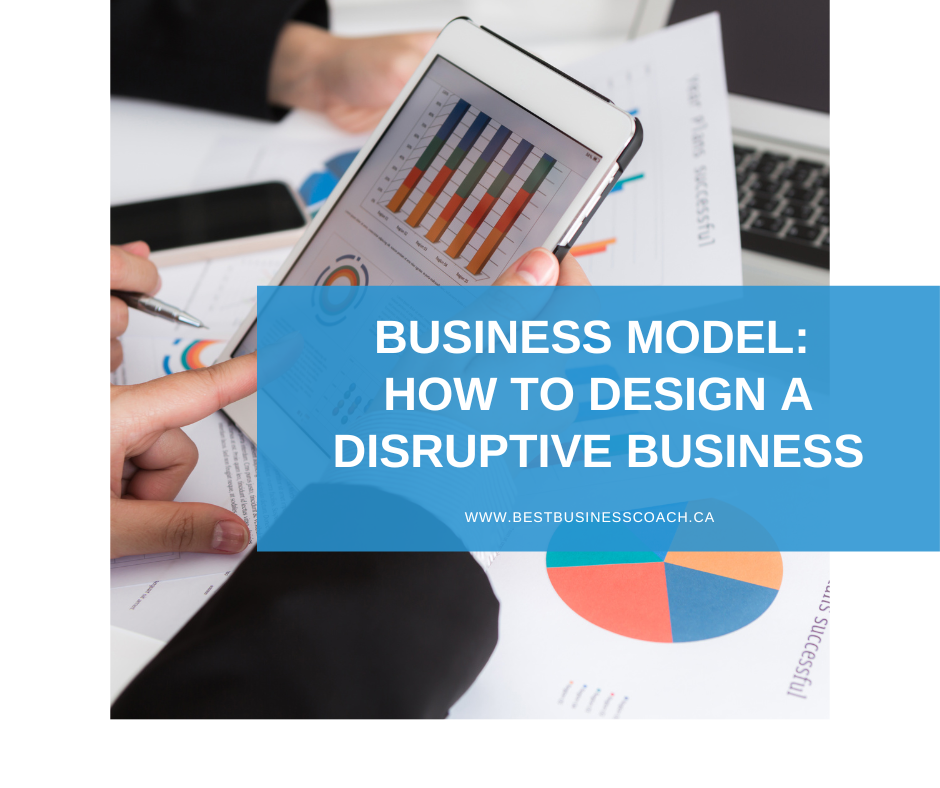Every business owner knows that a business model is essential to your success. But whether or not you already have a business model or are in the process of creating one, how do you know if your model is beneficial for your business?
Creating a new business model isn’t just about completing your business plan or determining which products to sell. It should describe the rationale behind how your company creates, delivers and captures value. With an effective business model, you can map out how you can create ongoing value for your customers — that leads to customer retention, acquisition, and profitability.
But how should you design your business model? How are you going to sell your business idea and create value for your customers? Here’s how you can secure a successful business model.
What is a business model and why do you need one?

DOWNLOAD Business Model: How to Design a Disruptive Business WORKBOOK
Your business model is your company’s plan for making a profit. It identifies all the products and services that your business plans to sell, its target market, and the expenses. Finally, it will also outline how you expect to make a profit.
Is a business model different from a business plan?
Yes, they are different!
Understandably, you might be a bit confused with the two. Knowing the difference between a business model and a business plan is essential to building a successful business.
A business model could be described as the foundation of a company while the business plan is the structure behind your business. Your company will need both so that you can have clearer processes and better products and services.
The business model revolves around how you are going to make money. It emphasizes on value proposition and revenue streams. On the other hand, the business plan will detail the specifics of your business model, such as the information and steps on creating the product, marketing, sales plan, organization, and more.

Why do you need a business model?
Your business model will help you experiment, test and model different ways to structure costs and revenue stream. It enhances your value creation so that you can attract both customers and investors alike. Your business model could also serve as the foundation for your financial forecasts, business goals, and business strategy review.
The common types of business models
There are many different types of business models that you can choose from. Here, we’ll outline the most common types that successful businesses use:
Affiliate business model
The affiliate business model uses affiliate links to generate revenue. These links are embedded in online content rather than using visual advertisements.

Subscription business model
In this business model, the customer pays a subscription fee to access a service or product. The subscription fee can be paid either monthly or annually. It can be used by traditional brick and mortar businesses and online businesses.
Marketplace business model
In this business model, the marketplace acts as a middleman between buyers and sellers. It allows the seller to list items for sale and provides tools for customers to easily connect with sellers — thus allowing you to reach your customer segments more efficiently.
Brokerage business model
Similar to the marketplace business model, the brokerage business model connects buyers and sellers. However, they tend to deal in higher dollar transactions.
Freemium business model
In the freemium business model, parts of the product or service will be given away to the customers for free. For example, both Spotify and YouTube allow users complete access to their entire database of music and videos while sprinkling ads here and there. At some point, users may opt to pay for premium access that enables them to stream without interruptions.

Bundling business model
Two or more products are sold together as one unit, often for a lower price. It generates higher volumes of sales. It's best used for products and services that are difficult to sell. However, it's possible that profit margins may shrink due to the low cost of products and services.
Crowdsourcing business model
This business model considers the opinions, suggestions, information, or work of customers to create products or services. It allows your company to tap into a large and diverse network of talent without having to hire employees.
Razor blades business model
In the razor blades business model, you sell a durable product at a lower cost to significantly increase the volume of sales. It's often used in products that need to be replaced often, thus where the name "razor blades" came from.

Customization business model
It takes an existing product or service and adds a custom element to every transaction. With this business model, you can make every sale unique for each customer.
Disintermediation business model
This business model involves selling directly to consumers. Doing so lowers the cost of your product or service and builds direct customer relationships.
Leasing business model
In the leasing model, the customer will return the product they were renting from you at the end of the lease agreement. This business model works best for big ticket items, such as manufacturing and medical equipment.
Brick and mortar business model
Your company will operate in a physical store and make money through face to face transactions. Brick and mortar stores are any physical storefront (e.g. coffee shop, grocery) that sells goods and services directly to customers.
How to design your own business model
Identify your target customers
Before you start planning anything else in your business model, the first thing you need to do is determine your target market. Instead of targeting a wider audience, hone in on the customers you truly need who want your products or services. You can narrow down your audience by determining their:
- Demographics
- Pain points
- Possible solutions

Determine key expenses
What does your business need to carry out daily processes, attract new customers, and reach business goals? Document all essential business resources to ensure that your model is amply prepared to sustain your business and the expenses associated with them.
You’ll also need key partners that can contribute to your ability to serve customers if you ever hope to function properly as a business, such as suppliers and strategic alliances.
Develop a marketing strategy
How are you going to stand out among your competitors?
Establish what your business is offering and highlight how it’s unique and innovative compared to other products or services. You can create a robust value proposition by asking yourself:
- What unmet needs of my target customers am I trying to fulfill?
- How does my product or service stand out from competitors?
- What do my target customers want?
- When should I launch my product or service?
- How will I build customer relationships?
When coming up with a product or service, make sure it’s desirable, viable, and profitable. If you keep these elements in mind, you can guarantee its market success, which will make your firm's business model strong and innovative.
Figure out how to turn a profit
It’s important for a business to generate leads and close sales. Creating a good lead generation can help customers find you and turn those prospects into sales — and sales into profit.
It’s also important to determine how you’re going to make a profit, which is called your revenue model. Your revenue model should have two main components:
- Cost structure. This includes all the expenses that your business will incur in planning, creating, and delivering customer value.
- Revenue stream. It encompasses all the primary and secondary revenue streams that your business uses.
FREE "Mystery Gift"?
Let me stay in touch with you via email and as a thank you - get this FREE gift.. Something others paid over $1,000 for. (True story)

It outlines how I helped a client do over $1,000,000.00 in under 8 months.
With a single, automated online marketing strategy.
Still in use today.
*We will never rent, sell or pull any nonsense with your info. You may unsubscribe anytime.
We WILL send you useful + helpful tools, templates, info & cool stuff.
My mission is to help you live a long, happy, healthy, joyful & wealthy life.
Make adjustments as needed
Flexibility is important in a business. Leave room for future innovations and changes. If you want to make your business model work long-term, you'll need to sure that your business can make adjustments or improvements as needed -ince the market is susceptible to changes,
The key components of a business model
Business models could vary in form and function depending on the type of business you have. It may be one type of business model or perhaps a combination of two or more types. To create your company’s business model, you’ll need to find out what works for your existing business among the different types of business models discussed above.
But all business models have the same elements. Here are the eight key components you will want to keep in mind when building your business model:
- Target market
- Pain point and solution
- Value proposition
- Competitive advantage
- Business resources
- Revenue model
- Cost structure
- Revenue streams
- Key metrics
- Profit margin
What is the Business Model Canvas?
If you’re doing a business model generation, the Business Model Canvas is a handy tool that will help you outline the details needed to create and market a successful product or service.
Below are the key areas in the canvas and guide questions that will help you answer them:

Key Partners
- Who are your key partners?
- Who are your key suppliers?
- Which key resources are you acquiring from your partners?
- Which key activities do your partners perform?
Key Activities
- What key activities are required by your:
- value propositions?
- distribution channels?
- customer relationships?
- revenue streams?
Key Resources
- What key resources are required by your:
- value propositions?
- distribution channels?
- customer relationships?
- revenue streams?
Value Proposition
- What value do you offer for customers?
- What pain points are you trying to solve?
- What products or services do you offer?
- Who are your customers?
Customer Segment
- For whom is your value creation targeted?
- Who are your key customers?
Customer Relationships
- What type of relationship does your customer segment require you to establish and maintain?
- Which ones have you successfully established?
- How are they integrated with the rest of your business model?
- How much do they cost?
Channels
- What channels do you use to reach your customer segment?
- How are your channels integrated?
- Which channels work best?
- Which channels are most cost efficient?
Cost Structure
- What are the most important costs in your business model?
- Which key resources are most expensive?
- Which key activities are most expensive?
Revenue Stream
- How much are your customers willing to pay?
- What are they currently paying for?
- How are they currently paying?
- How would they prefer to pay?
- How much does each revenue stream contribute to overall revenue?
Using the Business Model Canvas, you can develop a product roadmap. Through that, you can enhance value creation, which will end up improving your overall value chain.
While a business plan doesn’t really stay accurate for long, a Business Model Canvas is more agile and allows you to pivot as needed. It helps you visualize key areas, such as what products or services you can offer and how the customer pays. Thus, the Business Model Canvas offers an easy method for product planning and strategic management.
Tips in creating a business model
Editing your existing business model or creating entirely new business models can be quite the overwhelming task. Here are a few tips that can help you stay on track in creating your business model design through the Business Model Canvas:
- Take time to analyze the current situation of your business.
- Closely analyze your competitors.
- Be creative in planning your products, services, and processes.
- Create objectives to reach your ideal business model canvas.
- Align your business goals with your business model.
- Focus on your value proposition.
The benefits of a sound business model
With a successful business model, your company would benefit greatly. Below are some of the advantages that come with a good business model:
- It creates competitive advantage. You can create a unique reputation for your brand, which creates buzz among consumers and gives you an edge over your competitors.
- It stimulates business growth. A solid business model brings consistent profit.
- It establishes financial stability. With a successful business model, your finances will be stable, allowing you to weather economic storms and market fluctuations.
- It attracts lenders and investors. Since your business model creates a profit formula, it makes your business attractive to lenders and investors since you can elaborate on your profit expectations.
- It helps improve your business. A business model provides insight into a business’ inner structure. Through that, you can figure out what’s working and how to leverage it as well as what’s not working and how to fix it.
Crafting a robust business model for your existing business can help you enhance a business idea and create a disruptive business that will truly make a mark on the industry you’re in.
It doesn’t matter if you are a new business creating your first business model or an established business thinking about changing business models. It’s always a good idea to reassess your existing business model — if you do have one — to see if it’s still serving your company’s needs and goals, then create more innovative business models based on the key components and the Business Model Canvas so that you can generate revenue and add value to your customers.
Choosing one business model is optimal since trying to operate more than one will be devilishly difficult. But if your company intends to address more than one customer segment, you could choose a particular business model for each one. Remember that the best business models are founded on accurate business assumptions and business framework. That’s why it requires an understanding of your business.
If you’d like to know more about building a business model or need some assistance, try Habit Hero and create a solid business model that’s capable of fueling your business’ success!

